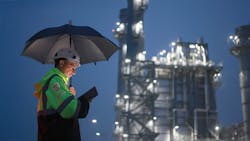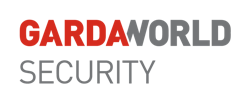Rethinking Security in the Energy Sector: An Integrated Approach to Managing Risk
Key Highlights
- A single point of accountability streamlines security management, reduces redundancies, and clarifies responsibility in incident response.
- Integrated security solutions combining AI, surveillance, and threat intelligence enable proactive threat detection and rapid response.
- Fragmented security systems lead to inefficiencies and compliance gaps; consolidation enhances operational efficiency and regulatory adherence.
- Investing in personnel well-being and training improves threat detection, response times, and overall security effectiveness.
- A unified security approach supports long-term resilience, operational excellence, and stakeholder confidence in the energy sector.
Ensuring resilience through a single point of accountability
If the energy industry is the lifeblood of economic activity, security is the backbone that assures the sector’s operational sustainability in the first place.
This is particularly relevant at a time of growing risk. Consider the socioeconomic upheavals that follow on from the impacts of climate change. Consider the escalation of cyber threats targeting critical infrastructure. Consider the impact of geopolitical tensions on global energy markets. All this is on top of the long-standing complexities associated with regulatory compliance and technological disruption.
The frequency and severity of these challenges highlight the need for a profound shift in security posture, from a reactive paradigm to proactive, integrated security solutions.
But at what cost?
The Intersection of Security and Operational Efficiency
Too often, the perception is that cost efficiency clashes with the need for robust security measures.
In truth, operational disruptions due to security breaches can be costly. For instance, the 2019 ransomware attack on Norsk Hydro resulted in estimated losses of between $90 million and $110 million USD.
Likewise, non-compliance with security regulations can incur severe fines. The North American Electric Reliability Corporation (NERC) Critical Infrastructure Protection (CIP) standards, for example, can impose fines of up to $1 million USD for violations.
Security breaches can also erode customer trust and damage a company's reputation. A survey by the Ponemon Institute indicates that around 65% of customers lose trust in a company following a data breach.
Naturally, it’s not enough to simply check the security box and swallow the costs. In today’s world of integrated security options, security is far more than a cost center – it’s also an enabler of operational excellence. In many respects, that’s because new technology has arrived. Even with climate change acting as a multiplier of severe risk in the energy sector, AI-driven surveillance and predictive analytics can be leveraged for real-time weather risk mapping and to pre-empt disruptions – an approach explored in the GardaWorld Security Guide to Protecting Oil & Gas Operations from Climate Disruptions. Threat intelligence can also be leveraged to allow immediate response, anywhere and anytime.
Similarly, high-tech security surveillance systems ranging from advanced intrusion detection, Mobile Surveillance Units (MSUs), and drone surveillance through Unmanned Aerial Vehicles (UAVs) to biometric access control, video analytics, and thermal imaging can give your security team eyes and ears everywhere it matters — proactively and continuously.
The question is, how to manage this disparate solution set?
The Case for Integrated Security
Our observation is that fragmented security solutions remain a pervasive issue in the energy sector, resulting in inefficiencies, compliance gaps, and accountability challenges.
Organizations often rely on a patchwork of vendors and technologies, each addressing a specific need but rarely operating in harmony. This lack of integration leads to redundant efforts, delays in threat response, and increased costs.
Moreover, fragmented systems create blind spots in compliance management. The energy sector is governed by stringent regulations such as NERC CIP standards, and failure to meet these requirements can lead to hefty penalties. However, when security measures are disjointed, ensuring consistent compliance becomes a daunting task, opening the door to potential fines and reputational harm.
Accountability is another critical challenge. When multiple vendors are involved, assigning responsibility in the event of a breach or failure becomes murky. This lack of clear ownership exacerbates the consequences of incidents, making recovery and remediation slower and more complex.
A unified approach to security operations addresses these challenges by integrating manned guarding with advanced technologies and threat intelligence. By consolidating vendors and systems, organizations can simplify procurement, enhance operational efficiency, and foster a more cohesive security posture.
For example, unified platforms allow seamless communication between proactive threat mitigation, on-the-ground security personnel, and automated systems such as AI-driven surveillance or drone monitoring. This integration ensures that threats are detected, escalated, and addressed in real time, minimizing response times and reducing vulnerabilities.
Additionally, centralized security management enhances transparency and accountability. A single provider or an integrated system offers a clear chain of command, ensuring that stakeholders know who to contact in case of an issue. This clarity not only improves incident response but also builds confidence among regulators and partners.
At its core, this idea encapsulates the advantages of having a single point of accountability in security operations. Rather than juggling multiple vendors or systems, organizations can rely on a unified framework where responsibility is clearly delineated.
With fewer moving parts and a trusted partner managing security operations, organizations can focus on their core mission: delivering reliable energy while navigating a complex risk landscape.
Protect Operations Before the Next Storm Hits
Resilience starts with preparation. Download the GardaWorld Security Guide to Protecting Oil & Gas Operations from Climate Disruptions for practical steps on risk mitigation, compliance, and maintaining business continuity during extreme weather.
The Human Element in Security
While technology plays a pivotal role in advanced security strategies, people remain the cornerstone of effective solutions. Human expertise brings situational awareness, critical thinking, and adaptability that technology alone cannot replicate. Security personnel are often the first responders to emerging threats, and their ability to assess and react in real time is invaluable in protecting critical infrastructure.
The security sector faces unique workforce challenges, including high turnover rates and irregular schedules that can impact service consistency. Retaining skilled personnel is critical, as frequent turnover disrupts operations and increases training costs. Similarly, irregular work schedules can lead to employee burnout, reducing the effectiveness of security teams.
GardaWorld Security’s recognition as a Great Place to Work® offers valuable insights into addressing these workforce challenges. By prioritizing employee well-being and engagement, the company has demonstrated how investing in personnel leads to service consistency and operational excellence. Retention programs, professional development opportunities, and a supportive work environment contribute to a motivated and reliable workforce.
Engaged employees are more likely to take a proactive approach to risk mitigation. Our experience is that when security personnel feel valued and supported, they are more attentive, committed, and effective in their roles. This proactive mindset translates into better threat detection, faster response times, and a stronger overall security posture.
The Big Picture
Ultimately, security is a strategic asset that drives trust, reliability, and competitive advantage. A robust security posture enhances stakeholder confidence, supports regulatory compliance, and positions organizations as leaders in resilience and risk management.
Integrated security solutions play a critical role in addressing the dual challenges of regulatory compliance and operational efficiency. When human and technological resources are unified, these solutions ensure 24/7/365 coverage, consistent adherence to standards, and streamlined processes—all of which reduces the burden of regulatory scrutiny and improves overall operational performance.
By integrating real-time risk intelligence, advanced surveillance systems, and skilled personnel, organizations can stay ahead of threats while fostering a culture of resilience, operational excellence, and long-term success.
Interested in GardaWorld Security’s solutions? Talk to an expert.

